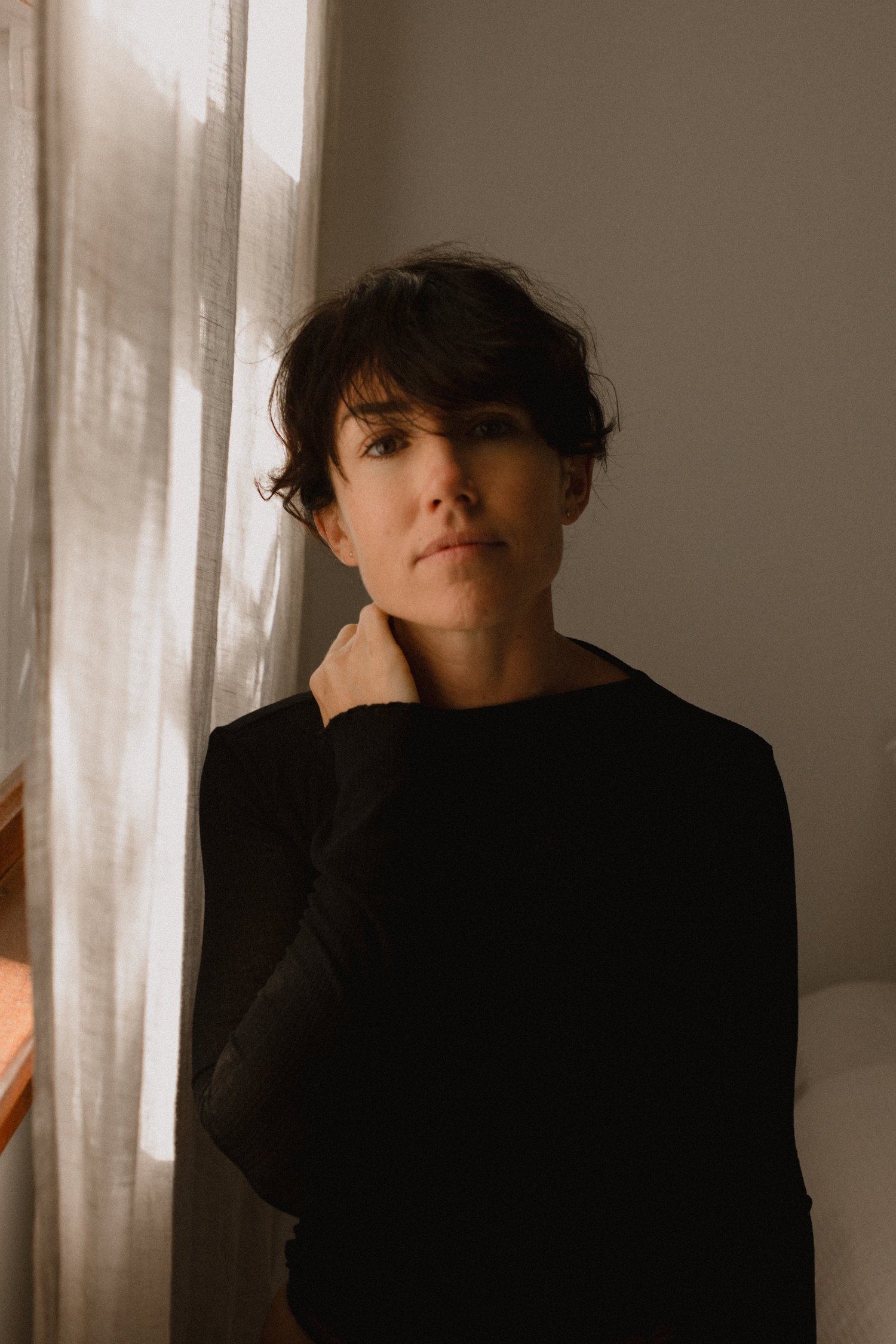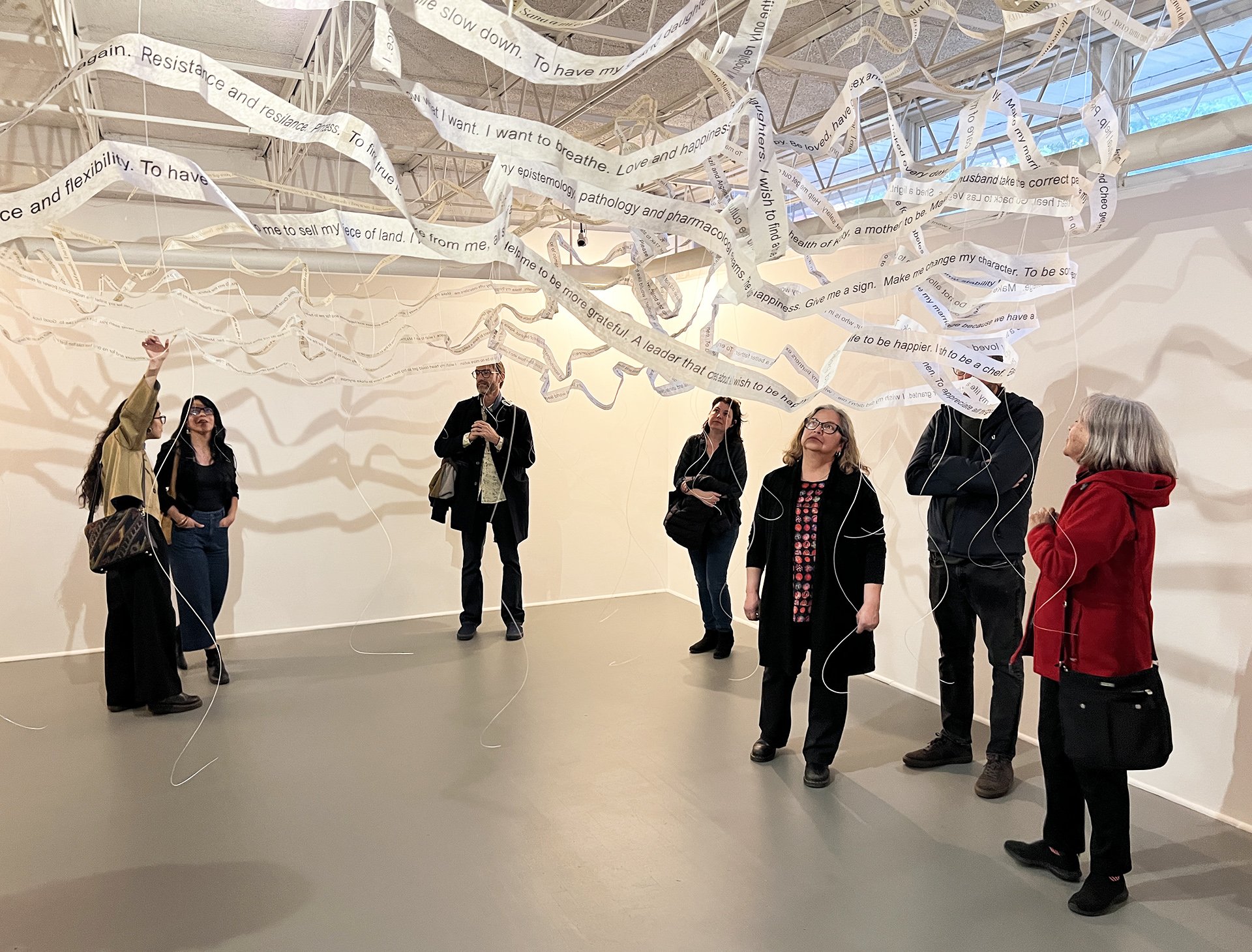
Editorial
August 2025
On the Quiet Imposition of Meaning
We don’t always choose the themes that shape an issue. Sometimes they arrive like wounds we didn’t know we carried. This one emerged in fragments: a silent pouring, a scratched-out gaze, a girl mistaken for dead, a face lost in fog. The works assembled here watch. They endure. They ask us to consider how meaning is given form, and at what cost.
On the cover: a woman in profile. Her posture is still, almost ceremonial. Her white dress hangs like a sentence waiting for its verb. But her eyes have been struck through. One red slash, precise and punishing. It is a correction, perhaps. Or a condemnation. The title of the painting is Well Done. The sarcasm is barely contained. This is not abstraction. This is discipline disguised as praise. This is what happens when seeing itself becomes unacceptable.
We live in a time of loud impositions: manufactured truths, shouted interpretations, meaning twisted into slogans and stripped of nuance. The works in this issue resist such noise. They offer a different kind of imposition, one that is quiet, deliberate, and full of consequence. These are not escapes from the world. They are engagements with it, in its rawness, its uncertainty, its unresolved histories.
Mike Adams paints the landscape not as scenery but as testimony. His tonal fields do not perform beauty. They remember it. The trees lean forward. The skies press down. Everything breathes. Everything listens. His paintings are not declarations. They are questions held in open space.
Margit J. Füderer’s paintings are the nerve center of this issue. Her work scratches through surfaces, through flesh, through time. Words appear and vanish. Figures are wrapped, restrained, radiant, erased. These are not portraits. They are exorcisms. Her women are not passive subjects. They are sites of memory, resistance, and transformation.
Lisa Sorgini’s photographs turn inward, toward the domestic sphere, but there is nothing soft in her gaze. She captures the labor of caregiving, the repetition, the intimacy edged with exhaustion. Her images do not sentimentalize. They honor. They reveal the heroism in the overlooked.
The two stories by Jorge Maestre Martí unfold like prayers interrupted. In Five Minutes, a woman speaks to her dying husband with fury, with love, with the need to say what has gone unsaid for years. The story is a confession, a reckoning, a letting go. Not of grief, but of silence. In The Dream, death hovers like fog, only to be momentarily pushed aside by breath, by memory, by the weight of a dream that insists on life. These are not stories of resolution. They are stories of return.
This issue also marks the beginning of a new section: Reviews. Here we open space for reflections on exhibitions, books, and performances. These are not academic critiques, but acts of close attention, responses shaped by care, curiosity, and the belief that meaning deepens through conversation.
And still, the question remains: how is meaning imposed, and by whom?
María Zambrano wrote, “Only through love and death does the truth appear.” This issue lingers in that thin space where love is compromised and death speaks in riddles. Here, art becomes a site not for answers but for refusal.
To look at the cover again is to feel a kind of accusation. The red line is surgical, decisive. It tells you something was seen that should not have been. Or worse, something was not seen, and the price is this.
We are asked, gently and without escape, to decide:
Will we look anyway?
This is what remains.
And it is enough.
Jorge R. G. Sagastume
Editor-in-chief
This Issue’s Contributors, in Alphabetical Order





